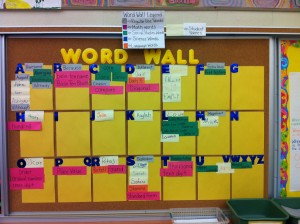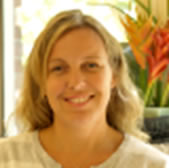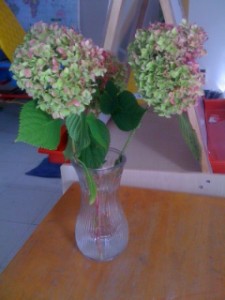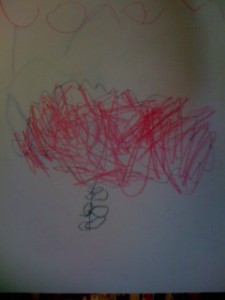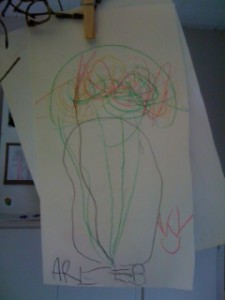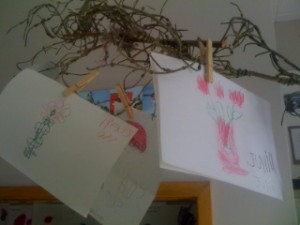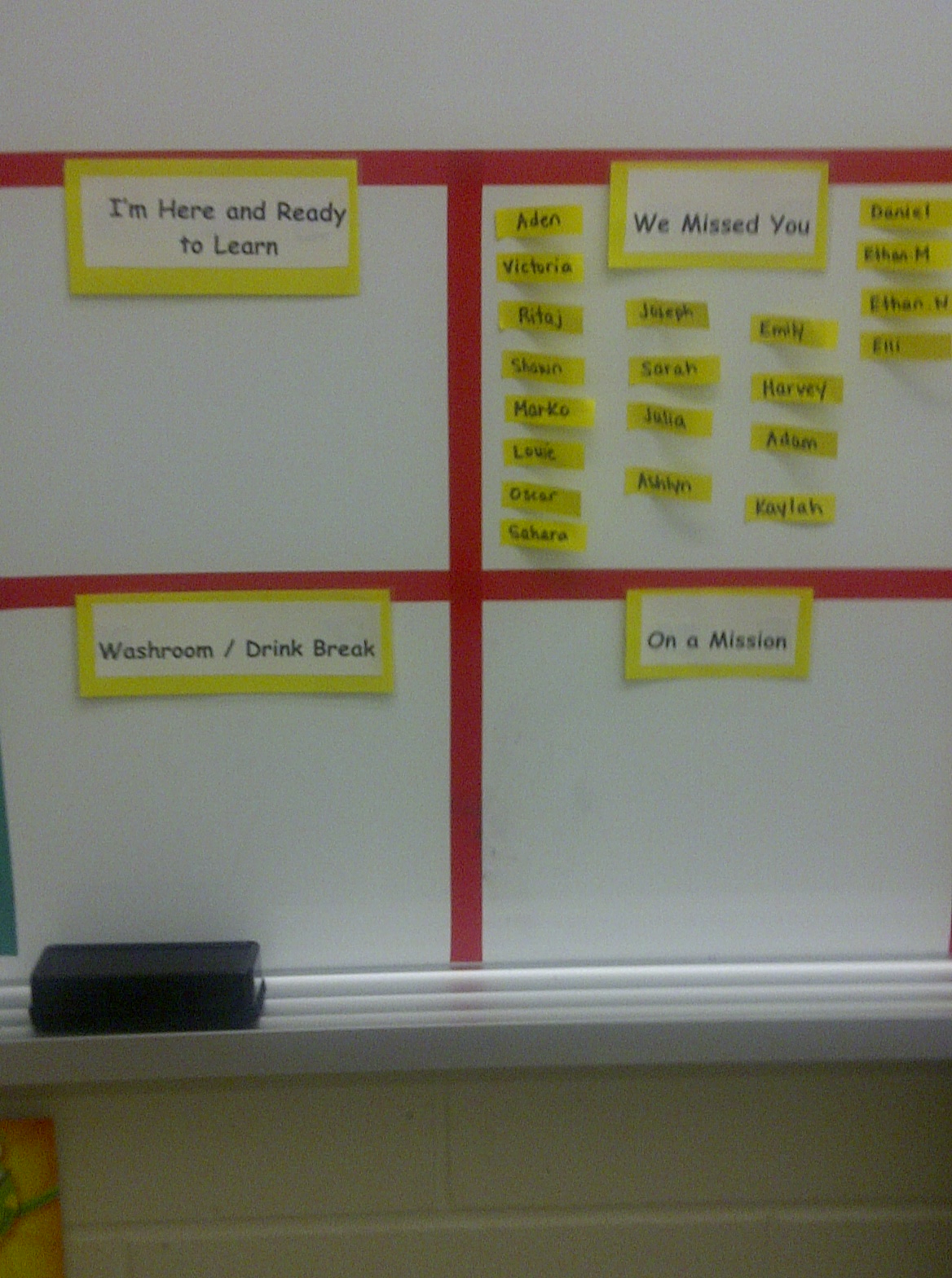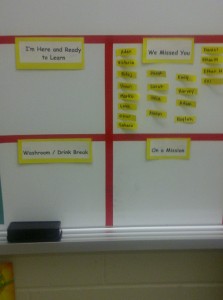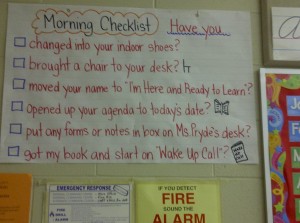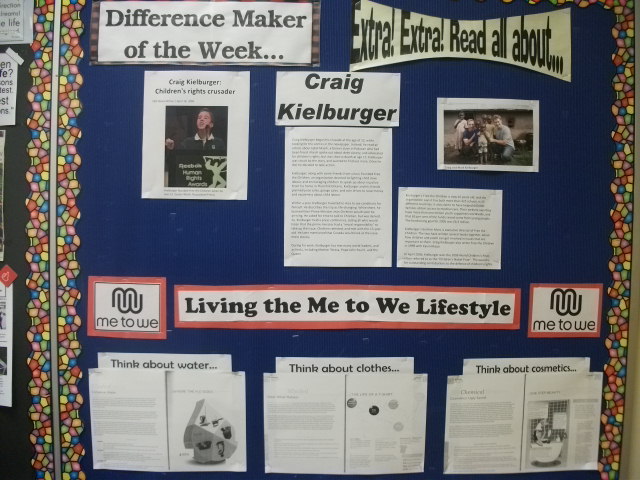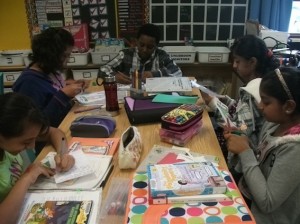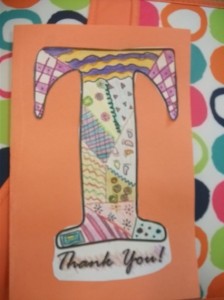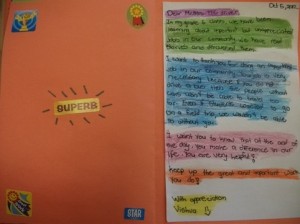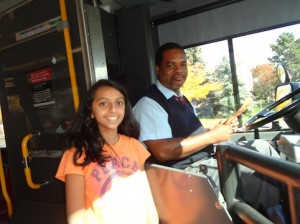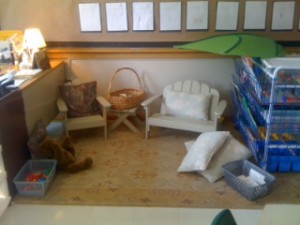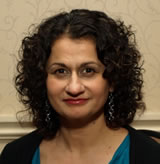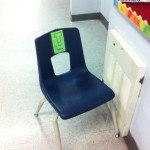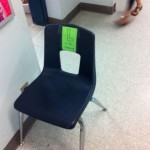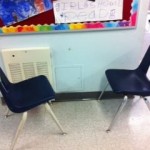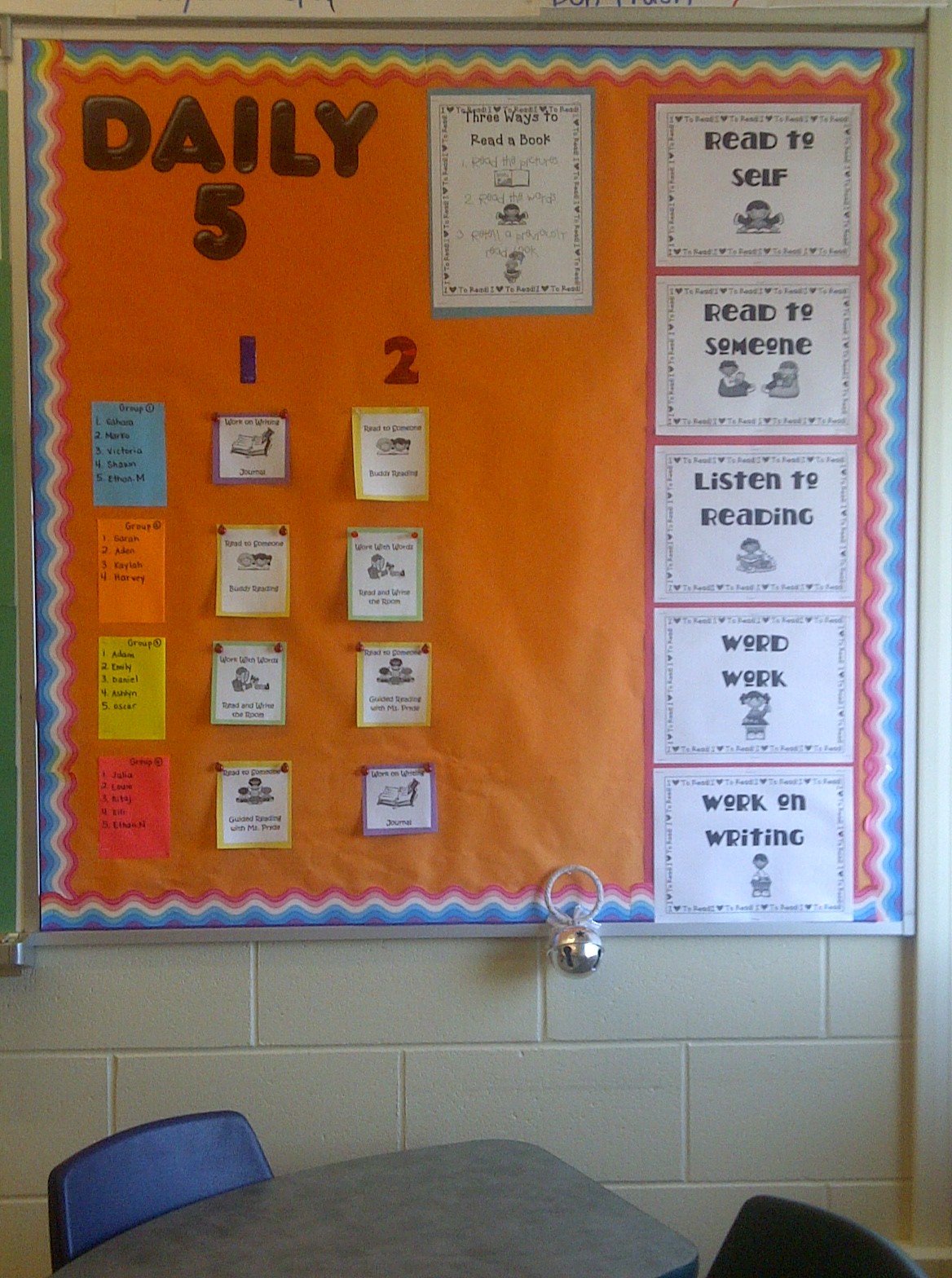This year, the initiative our Primary Team has taken on in regards to literacy, is implementing The Daily 5 and CAFE. For those of you whom are unfamiliar with the 2, they are based on books written by “The Sisters”, Joan Moser and Gail Boushey. These books are a great (easy) read and gives you a wonderful basis and understanding of the 2 concepts, and how to set it up in your classroom. The Daily 5 is a framework that allows students to participate in 5 different activities each and every day: Read to Self, Read to Someone, Listen to Reading, Work on Writing and Work on Words. CAFE is an acronym standing for C- Comprehension, A- Accuracy, F- Fluency and E- Expanding Vocabulary, and are the strategies good readers and writers need to be successful. The 2 work very well and I feel, go hand in hand with one another. If you buy (or read) both books, they give you examples of how your first few days will look like when you are setting up the program in your classroom.
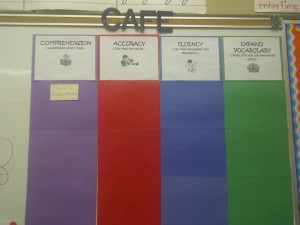
Since the 2nd week of school, I begun implementing these programs, one by one, illustrating what each Daily 5 looks like. We also created anchor charts that have been posted around the room illustrating the “expectations” both students and teachers have during our literacy block. Our chart is set up with the headings Students Do vs Teacher Do. Many of the activities are very similar in what the students and teachers are expected to do. Students, for the most part, are expected to work the whole time, remain quiet, work in one spot, get to work right away, and have fun! The teacher is expected to work with students at the guided reading table, conference with students, and watch/listen to how students are reading/writing.
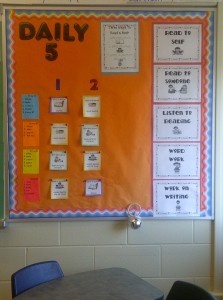
The first concept I introduced to my class was Read to Self (independent reading). When we were practicing,
we were working on our stamina. This means, how long our brains are working without any breaks. Students should be reading for 20 mins each day, but first, we needed to build up our stamina, to reach the 20 mins. My students are quite fabulous, and really enjoy reading and it only took us 7 days to reach of goal of reading for 20 mins consecutively without any breaks. I encourage my students to have 2-3 books with them at their desk so if they finish a book before the 20 mins is over, they will have some more books at their desks so they can continue to read without stopping and interrupting others by getting a new book. Then, we moved to Listen to Reading, which is when I introduced our class read a loud. I brought in all my old Goosebumps Books for our classroom library, and my students are now obsessed with them. So, we took a classroom vote, and our first read a loud book was a Goosebumps Book- The Ghost Next Door. Then, we moved on to Read to Someone. How I set this up in my classroom, was by practicing buddy reading. We discussed how it looks like when you are reading to your buddy and EEKK (Elbow to Elbow, Knee to Knee). We did this for 2 days, and built up our Read to Someone stamina of 20 mins. Then, I introduced Work on Writing, where students had the opportunity to write in the writing journals. We created success criteria for journal writing, so students knew exactly what was expected of them when they wrote in their journals. Finally, I taught a mini lesson on syllables, and our Work on Words introduction allowed students to add their names to the class word wall, and they needed to sort all the students’ names based on the number of syllables in each name.
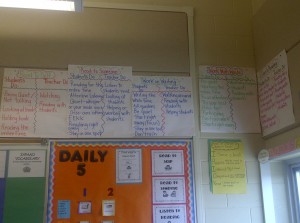 Once we went through all of the lessons and talked about what each Daily 5 looked like, as well as modelling some of the CAFE strategies (such as Check for Understanding, Choosing Good Fit Books and Go Back and Re-Read), we started our Daily 5 centres last week. The Daily 5 is all about choice, but for the first week, I decided to split my class into groups and they rotated through the Daily 5 centres so they could become familiar with the whole process. In our 100 minute literacy block, my students have the opportunity to be engaged in the Daily 5. My students first start off with Read to Self, where they read independently for 20 minutes. Then, I ring the bell which is an indicator to my students that they need to quickly tidy up and meet me on the carpet. Then, I teach a mini lesson on the CAFE strategy that we are currently working on. Sometimes, I read a read a loud picture book to my students and either model how to use the CAFE strategy, or get students to help me with it (so it becomes a shared reading and shared use of the CAFE strategy).
Once we went through all of the lessons and talked about what each Daily 5 looked like, as well as modelling some of the CAFE strategies (such as Check for Understanding, Choosing Good Fit Books and Go Back and Re-Read), we started our Daily 5 centres last week. The Daily 5 is all about choice, but for the first week, I decided to split my class into groups and they rotated through the Daily 5 centres so they could become familiar with the whole process. In our 100 minute literacy block, my students have the opportunity to be engaged in the Daily 5. My students first start off with Read to Self, where they read independently for 20 minutes. Then, I ring the bell which is an indicator to my students that they need to quickly tidy up and meet me on the carpet. Then, I teach a mini lesson on the CAFE strategy that we are currently working on. Sometimes, I read a read a loud picture book to my students and either model how to use the CAFE strategy, or get students to help me with it (so it becomes a shared reading and shared use of the CAFE strategy). 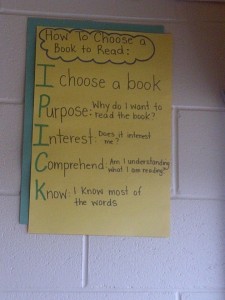
Once the lesson is complete, students are told which centre they will start off with. Students will rotate through 3 centres in one day. Last week, our centres were: Read to Someone (Buddy Reading) or Read to Someone (Guided Reading with Ms. Pryde), Work on Writing (journal writing which integrated with Social Studies- If I were a First Nations person, I would live… I would eat… I would travel by…), Work on Words (Read and Write the Room) and then I would finish off the 100 minute literacy block by reading a few chapters from our chapter read a loud book. Students spend 2 min at each centre. Next week, now that the students have had the opportunity to complete one complete rotation of our Daily 5 centres, students will be able to choose which centre they will go to and will keep track of which centres they would like to go to (a great Responsibility indicator, for students to make sure they go to each centre at least once, as well as keeping track of it on their own).
So far, it has been a success in my classroom and I look forward to seeing how it will look like in my classroom this week!


